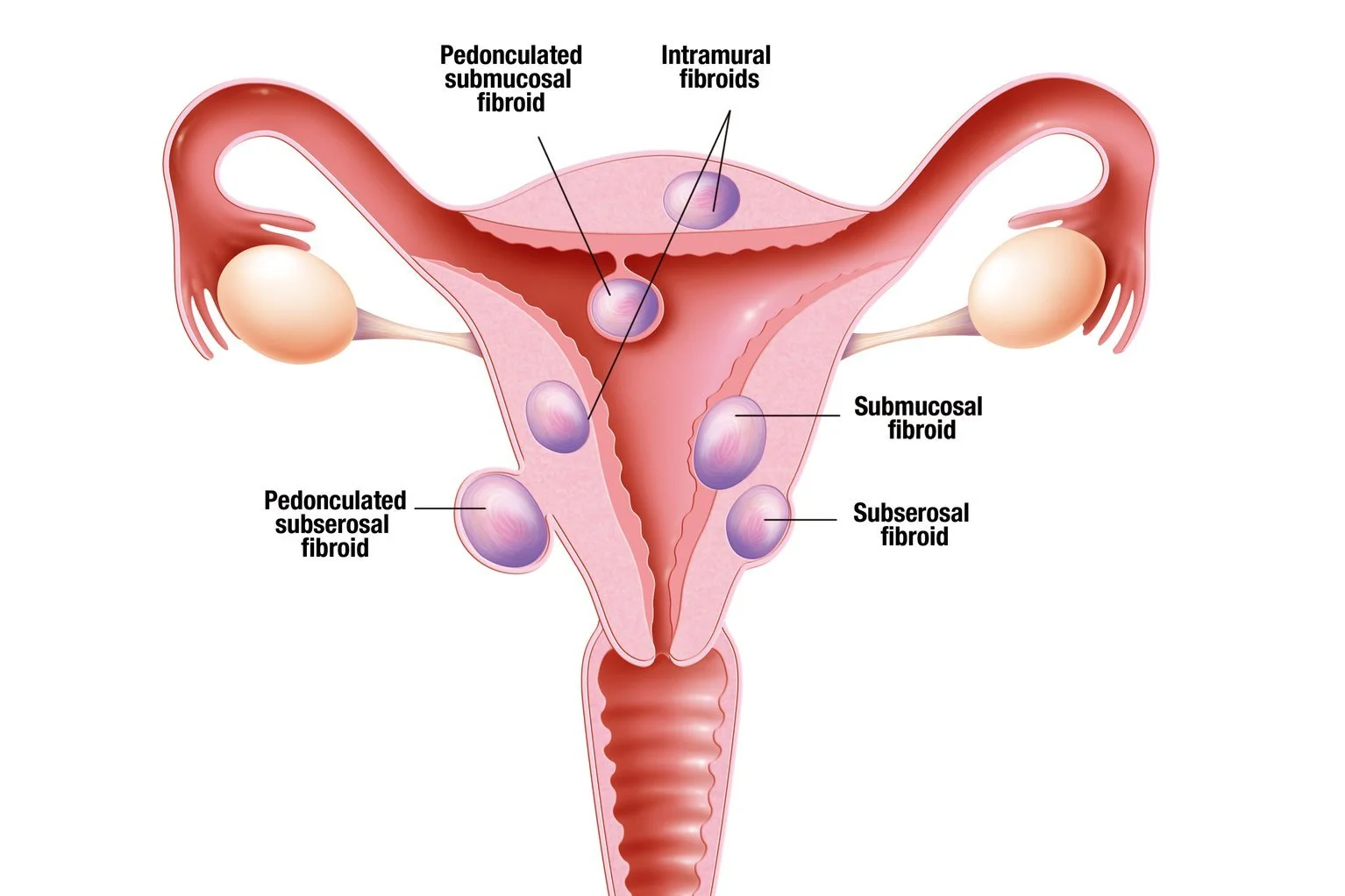Understanding Fibroids: Prevention and Healing
Hello, Friends.
Uterine fibroids are non-cancerous growths that develop in the muscle tissue of the uterus. They are a common issue for many women, especially during their reproductive years. These growths can vary in size and number, and while some women might not even notice them, others can experience a range of symptoms that affect their daily lives.
Types of Fibroids
Fibroids can vary in size, shape, and location. The main types of fibroids include:
Photo Credit: NHS
1. Intramural Fibroids: These develop within the muscular wall of the uterus and are the most common type.
2. Subserosal Fibroids: These grow on the outer surface of the uterus and can sometimes form a stalk (pedunculated subserosal fibroids).
3. Submucosal Fibroids: These develop just beneath the lining of the uterine cavity and can protrude into the uterine cavity.
4. Pedunculated Fibroids: These are attached to the uterus by a stalk, either on the outer surface or within the uterine cavity.
Photo Credit: Unsplash
Apoptosis and Fibroids
Apoptosis is the process of programmed cell death that allows the body to eliminate old, unnecessary, or damaged cells. Apoptosis plays a role in the initial stages of fibroid growth. Under normal conditions, apoptosis helps eliminate abnormal cells, preventing them from forming fibroids. However, when this process is disrupted, these abnormal cells can survive and start to grow into fibroids. Factors such as hormonal imbalances or environmental influences can interfere with apoptosis, allowing the initial formation of fibroids. Once fibroids are present, processes like hypoxia (a condition in which there is an insufficient supply of oxygen) further inhibit apoptosis, leading to the continued growth of the fibroids.
Prevalence in Modern Life
Fibroids are increasingly common in modern society, likely due in part to more endocrine disruptors in modern life that cause hormonal imbalances. Additionally, certain diets can increase the risk of developing fibroids. Diets high in red meat, processed foods, and low in green vegetables and fruits have been linked to a higher prevalence of fibroids. These dietary patterns can contribute to inflammation and oxidative stress, which may play a role in fibroid development.
Apoptosis and Plant-Based Diets
A plant-based diet can promote apoptosis and support overall health. Foods rich in antioxidants, such as fruits, vegetables, nuts, and seeds, can help enhance the body's natural ability to regulate cell growth and death, potentially reducing the risk of fibroid formation.
Foods That Promote Apoptosis
To avoid fibroids and help manage existing ones, it is essential to include foods that promote apoptosis and support overall health. Such foods include:
Photo Credit: Unsplash
Cruciferous Vegetables: Broccoli, Brussels sprouts, cauliflower, and kale contain compounds that can help promote apoptosis.
Berries: Blueberries, strawberries, and raspberries are rich in antioxidants that support cell health.
Nuts and Seeds: Walnuts, flaxseeds, and chia seeds provide essential fatty acids and antioxidants.
Green Tea: Contains catechins, which have been shown to induce apoptosis in abnormal cells.
Turmeric: Contains curcumin, a compound known for its anti-inflammatory and apoptotic properties.
The Role of Antioxidants
Antioxidants play a crucial role in preventing and treating fibroids. They help neutralise free radicals, reducing oxidative stress and inflammation, which can contribute to fibroid growth. Incorporating antioxidant-rich foods into your diet can support cellular health and promote apoptosis, aiding in the prevention and healing of fibroids.
Liver Health and Hormonal Balance
The liver plays a crucial role in maintaining hormonal balance, as it metabolises and detoxifies excess hormones, including oestrogen. A healthy liver can help manage and regulate hormone levels, potentially reducing the risk of fibroid development. Conversely, an overburdened or unhealthy liver can lead to hormonal imbalances, contributing to the growth of fibroids.
The Role of Metabolic Nutrition and Detoxification
Metabolic nutrition and detoxification play a crucial role in the prevention, management and healing of fibroids. This holistic approach focuses on providing the body with the nutrients needed for optimal cellular function and eliminating toxins that may contribute to hormonal imbalances and fibroid growth. Supporting the body's natural detoxification processes helps eliminate toxins and endocrine disruptors. Foods that promote detoxification include those already mentioned; leafy greens, garlic, citrus fruits, and cruciferous vegetables like broccoli and Brussels sprouts. I cannot talk about detoxification without mentioning a coffee enema.
Understanding fibroids, their types, and the impact of modern living on their prevalence is crucial for effective management, prevention and healing. Incorporating metabolic nutrition and detoxification into your lifestyle can help prevent and treat fibroids by promoting hormonal balance and eliminating harmful toxins. This holistic approach not only addresses the symptoms but also targets the root causes, providing a pathway to better reproductive health and overall well-being.
References:


